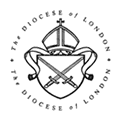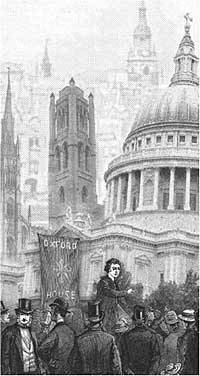How to Write a Church and Parish History: Laity
Look
Prominent lay people (for example long-serving churchwardens and organists) may well be commemorated around a church building, while the building itself will give clues as to the experience of the congregation as a whole: How is/was it laid out?
What facilities were there for interactions and activities outside worship services themselves? Do vestry cupboards yield surviving information – eg banners, posters, photographs, magazines – concerning lay groups in the church?
Listen
The recollections of members of the congregation are likely to be particularly helpful in gaining insights into lay experience in the past. Generalized memories of the ‘good old days' could usefully be focused by endeavouring to gather information on specific activities and groups in which older people (or their parents) were involved. If church life in the past is perceived as more vibrant than it is the present it will be instructive to establish what – other than nostalgia – makes it seem that way. Follow this link for information on oral history.
Read
The most useful starting point for reading about lay attitudes to religion in nineteenth-century north and east London is Hugh Mcleod, Class and Religion in the Late Victorian City, London: Croom Helm, 1974.
Three important studies concerned with boroughs south of the Thames are suggestive of attitudes and practices that are likely also to have been widespread in the Diocese of London:
Jeffrey Cox, The English Churches in a Secular Society: Lambeth, 1870-1930, New York: Oxford University Press, 1982.
Jeremy Morris, Religion and Urban Change: Croydon, 1840-1914, Woodbridge: Boydell, 1992.
Sarah C. Williams, Religious Belief and Popular Culture in Southwark c1880-1939, Oxford: Oxford University Press, 1999.
For discussion of the roles of women in church see:
Brian Heeney, The Women's Movement in the Church of England 1850-1950, Oxford: Clarendon Press, 1988.
Cordelia Moyse, A History of the Mothers' Union: Women, Anglicanism and Globalisation, 1876-2008, Woodbridge: Boydell, 2009.
Research
Individual lay members of congregations are unlikely to have left much trace on the historical record, unless they held offices (especially as churchwardens – if so you could examine the Churchwarden Visitation Returns held at Lambeth Palace Library) or played a particularly active role in the history of a church, as substantial benefactors, patrons, or as leaders of a particular activity or campaign. Some individuals corresponded with the Bishop of London about parish matters, and such letters survive in the Fulham Papers held at Lambeth Palace Library. From the late nineteenth-century onwards, parish magazines - which may still be held by churches, or can be found with other parish records in the London Metropolitan Archives – often contain much information on lay activities, including named individuals who contributed articles or who were the subject of reports. Such magazines often provide evidence of the increasingly important roles played by women in parish life.
In general, however, sources relating to particular parishes provide evidence relating to the laity as a group. The 1851 Religious Censusand Visitation Returns can provide instructive snapshots of lay religious practice, activities and attitudes, while a range of other sources relating to the clergy, including Newspapers and Periodicals, Autobiogaphies and Biographies, Personal Testimony and the Charles Booth interviews can also give valuable insights into their congregations.






